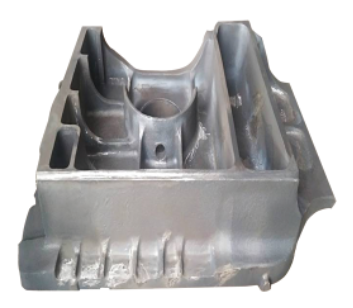Precision casting, as a high-precision and high-quality manufacturing process, plays an important role in modern industry. Its high precision, high surface quality, and high material utilization make it the preferred process for manufacturing complex parts. With the continuous advancement of technology, precision casting will usher in greater development space in digitalization, intelligence, green manufacturing and other aspects, providing better solutions for various industries. In the future, precision casting will continue to drive the manufacturing industry to a higher level, meeting the growing demand for high-performance and high-precision parts.
The aerospace industry has high requirements for precision, strength, and lightweight of parts, and precision castings are widely used in the manufacturing of key components such as engine blades, turbine disks, casings, and structural components. In automobile manufacturing, precision castings are used for the manufacturing of engine cylinder blocks, gearbox housings, turbochargers, braking systems, and other components, which can meet the requirements of lightweight, high-strength, and complex shapes of automobiles.
What are the process steps for precision casting parts using the lost wax method?
1、 Mold preparation (master mold and molding)
1. Master mold design and manufacturing
The master mold is the original model used to make wax molds, which needs to be designed according to the part drawings, and the size needs to reserve metal shrinkage (different materials have different shrinkage rates, such as aluminum alloy about 1.2% -1.5%, stainless steel about 2% -2.5%).
Manufacturing method:
Traditional craftsmanship: Metal master molds (such as aluminum alloys or steel) are made through CNC machining, electrical discharge molding, and other methods, with high precision and strong durability, suitable for large-scale production.
Modern technology: using 3D printing (such as SLA photopolymerization, SLS selective laser sintering) to directly manufacture resin master molds, with low cost and short cycle, suitable for small batches or complex structural parts.
2. Molding production
Compression molding is a mold used for mass production of wax molds, which needs to be remade according to the master mold to ensure the dimensional accuracy of the wax mold.
Type:
Metal pressing: processed from aluminum alloy or steel, with high strength and long service life, suitable for large-scale production.
Silicone molding: Based on the mother mold, it is made by flipping the silicone mold, which is flexible, easy to demold, and suitable for the production of complex shapes or small batches of wax molds.
2、 Wax pattern production
1. Wax material preparation
Common wax materials:
Low temperature wax: The main components are paraffin wax and stearic acid, with a melting point of about 50-70 ℃, good fluidity, suitable for small and medium-sized parts, low cost, but high shrinkage rate (about 0.8% -1.2%).
Medium temperature wax: mainly composed of rosin, beeswax, and synthetic wax, with a melting point of about 100-140 ℃, high strength, low shrinkage rate (about 0.3% -0.6%), suitable for high-precision parts (such as aerospace components).
Wax processing: Wax needs to be heated and melted, filtered to remove impurities, and to avoid bubbles and impurities affecting the quality of the wax mold.
2. Wax mold pressing
Inject the molten wax material into the mold by pressure injection (such as manual injection, pneumatic/hydraulic injection machine), cool it down, and demold it to obtain a single wax mold.
Key controls:
Pressure and temperature: Insufficient pressure may lead to incomplete filling of the wax mold, while excessive temperature may cause deformation of the wax mold.
Demolding timing: Wait for the wax material to fully solidify (usually cool for 5-30 minutes, depending on the thickness of the wax mold) to avoid damage to the wax mold during demolding.
3. Wax pattern combination (welding module)
Combining a single wax mold into a wax module (also known as a "casting system") by wax welding (bonding with molten wax material) typically includes:
Casting wax mold: refers to the prototype of the component.
Gate wax mold: connects the casting with the sprue to guide the flow of molten metal.
Riser wax mold: used for shrinkage and exhaust to avoid shrinkage holes in castings.
Purpose: To improve production efficiency (multiple parts can be formed in one pouring) and optimize the flow path of molten metal.
3、 Shell preparation (multi-layer coating and hardening)
1. Surface degreasing and roughening
The surface of the wax mold needs to be cleaned with solvents such as ethanol and acetone to remove oil stains and release agents, and the surface should be roughened by sandblasting (such as alumina micro powder) or chemical corrosion to enhance adhesion with refractory materials.
2. Coating and sanding
Multi layer coating: By repeatedly coating the coating layer and sanding layer, a multi-layer fire-resistant shell is formed, generally divided into a surface layer and a back layer:
Surface layer: The coating is composed of silica sol and high-purity quartz powder (or zircon powder, used for high demand castings), with fine particle size (such as 325 mesh) to ensure the smoothness of the inner surface of the mold shell and direct contact with the molten metal.
Back layer: The coating is composed of silica sol and ordinary quartz sand, with a coarse particle size (such as 80-120 mesh), which improves the overall strength and breathability of the shell and reduces costs.
Specific steps:
Dip coating: Dip the wax mold assembly into the coating to ensure complete coverage and eliminate bubbles.
Sanding: Evenly spread refractory sand (such as quartz sand, mullite sand) on the surface of wet coatings to enhance interlayer bonding.
Drying: dry in a constant temperature and humidity environment (such as temperature 20-25 ℃, humidity 50% -70%) for 4-12 hours to harden the coating layer (silica sol shell forms SiO ₂ gel through chemical reaction).
Layer requirements: Small and medium-sized castings are usually coated with 4-6 layers, while large and complex parts require 6-8 layers, with a total thickness of approximately 2-5mm.
Precision casting can produce parts with complex shapes and high dimensional accuracy, with tolerances controlled within ± 0.1mm. The surface smoothness of castings is high, and usually does not require extensive subsequent processing. Precision casting reduces material waste and is suitable for producing precious metal parts. Suitable for various metal materials, such as stainless steel, aluminum alloy, titanium alloy, high-temperature alloy, etc.
Precision casting can be used for the manufacturing of various metal materials, including carbon steel, alloy steel, stainless steel, aluminum alloy, titanium alloy, high-temperature alloy, etc. Different materials can be selected according to the usage environment and performance requirements of the parts to meet different engineering needs.

